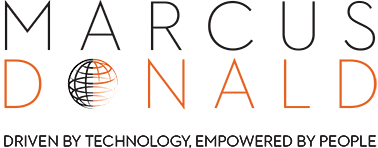LinkedIn is a magnificent tool to interact with people within your professional field, people who share the same interests and professional bubble as you. Though, the majority of professionals on LinkedIn don’t maximize this tool’s potential. When looking for a job, you need to shift your mind-set and understand that LinkedIn is your personal marketing tool, your profile is your product, and the people using LinkedIn are the market. What separates you from booking an interview or even securing an ideal job is how good of a marketer you are on LinkedIn.
We gathered up our best LinkedIn Personal Marketing strategies for you to utilize and get noticed by the people who matter within your industry.
Stage 1: Create a Product to Match the Ideal Audience
The first stage, is mapping out the people you would like to target and then altering your profile according to what they want to see. Just like any other business- if the product isn’t good enough, even the best marketing in the world will not make audience buy it.
Ask the following questions about your ideal target audience: how old are they? Their gender? Location? Position in the company? Hobbies? Past experience? What is most important to them at work? What do they have in common with you? Though, the most important question is: what information about yourself will push them to interact with you and add you as a connection?
After you have answered all these questions, you will have a persona- and that is your target market. Use the profile summary to write about your personality and the narrative of your experience. Use the different media outlets to attach videos or articles that are relevant to your target market, and shift the location of your profile’s component to create an image that will tick all the boxes. Your objective is to let any potential employer know you are the person for the job, only by looking at your profile. Though before you start working on your product, ensure your title is clear. Do not write something like ‘currently looking for work’.
Stage 2: Stand Out
LinkedIn is very smart with the way they connect people. The fact is that the second you like a post on LinkedIn, all your connections will see you liked it and the post itself. How will that get you an interview you ask?… Ever heard of reciprocity?
To stand out, pick 3-8 (honestly it can be as many as you choose) strategic connections and like 50%-75% of their posts (choose wisely). Without saying a word, these strategic connections you have chosen will form a reciprocal relationship with you: where you like their posts to help them gain exposure and show them that their opinions matter to you and they will do the same.
This links to stage 1. If you know who your target audience are, you will easily identify who your strategic connections should be. Take between 10 minutes to an hour a day to scan through your LinkedIn feed and make these strategic connections you appreciate what they put out. Stand out above the pack.
Stage 3: Comments are Gold
LinkedIn world has 3 dominating currencies known as ‘shares’, ‘likes’, and ‘comments’. Comments are on the top of the food chain, comments are gold. To use another analogy, comments have a stock of their own- where if you produce too many of them and don’t strategize their use their stock will fall (fast).
Comments should be strategized and used in a situation where a conversation can be created. Use them to spark up a debate with multiple people, one which will attain other viewers’ attention. Too many people on LinkedIn comment pointlessly trying to be amusing or ironic when they don’t realise their stock is slowly dropping. Comments should be used to add value to yourself and portray your knowledge about a certain topic.
Comment on group topics, on influencer posts, but most importantly on posts and pieces of content where your target audience are most likely to follow the conversation. Express your opinions, and always be respectful as well as argumentative (this is not a competition).
*In an ultimate LinkedIn world, shares would be the dominant power but LinkedIn have yet to figure out a way to interactively immerse them into our feeds.
Stage 4: Share & Create
This may be the most crucial part of it all. This is where you get to be a real marketer. Similarly to any successful brand around the world these days- in order to establish a position in the market, you must put out content that not only benefits your audience but also portrays the narrative of what your brand is about.
With the tools available on LinkedIn, share content that you believe target audience and current connections may find valuable, engaging, or even inspirational. At the same time, do your best to create original content using the tools available on LinkedIn such as: published posts, picture posting, simple word posts etc. Plan a schedule and aim to share at least 3 to 4 times a week.
Above all, share content that will benefit your audience not only on a professional level but on a personal one too. If your audience are 35-40 years old, share an article about how to balance a busy schedule with healthy family life. Act according to the values and adjectives you want people to associate with your ‘brand’.
Quick Tips
When connecting with someone (whether you sent the invite or the other person did), write a personalised message welcoming your new connection into your network. Don’t default into writing an automatic message. Spend 2-5 minutes in order to write a message describing why you are excited to connect. New connections will appreciate the time you put in.
Post video content once in a while. Although not fully developed yet on LinkedIn, informative videos are a great way to raise engagement levels on your posts.
Make sure to do these things, and you will receive interest from multiple employers. It’s not an opinion, but a fact.


